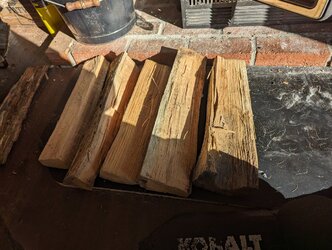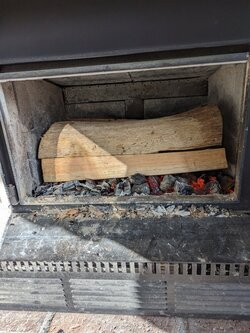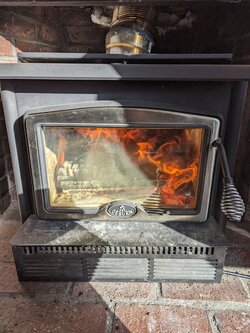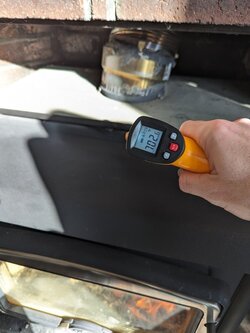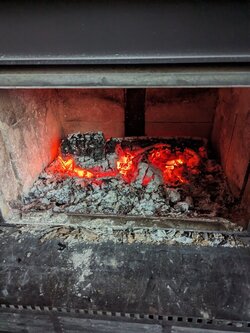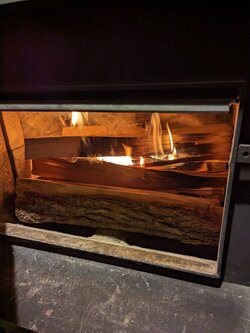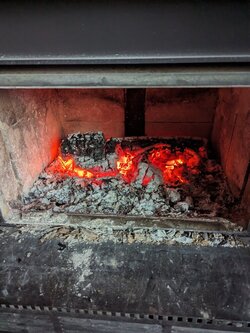Small CFM stove similar to the Englander 13. 1400 sq ft house.
I like my house on the cool side, around 61 degrees during the day and 50 at night (Yes, really). I have just switched to heating with wood during the day. I set the oil furnace thermostat at 50 degrees so I don't expect it to come on at all during the day. I do expect it to come on at night. This stove can't burn all night, but I like to get up to warm coals for an easier start in the morning so I will load it at the end of the evening.
By noon the house gets up to 70 degrees, which is too warm for me. I try to maintain a low fire so it doesn't burn out but it gets too hot for me. When it's 70 in the house it doesn't make sense to add more wood to keep the fire going.
The stove has an air inlet at the bottom. I close this down to one-half and then two-thirds as needed. The draft with my setup is "OK." Not great but I can work with it and at this time I don't want to get into changing the pipe configuration, adding to the chimney height, etc.
Question: What's the key to maintaining an even, lower temperature in the house throughout the day so I don't have to let the fire burn out and restart it later?
I like my house on the cool side, around 61 degrees during the day and 50 at night (Yes, really). I have just switched to heating with wood during the day. I set the oil furnace thermostat at 50 degrees so I don't expect it to come on at all during the day. I do expect it to come on at night. This stove can't burn all night, but I like to get up to warm coals for an easier start in the morning so I will load it at the end of the evening.
By noon the house gets up to 70 degrees, which is too warm for me. I try to maintain a low fire so it doesn't burn out but it gets too hot for me. When it's 70 in the house it doesn't make sense to add more wood to keep the fire going.
The stove has an air inlet at the bottom. I close this down to one-half and then two-thirds as needed. The draft with my setup is "OK." Not great but I can work with it and at this time I don't want to get into changing the pipe configuration, adding to the chimney height, etc.
Question: What's the key to maintaining an even, lower temperature in the house throughout the day so I don't have to let the fire burn out and restart it later?


